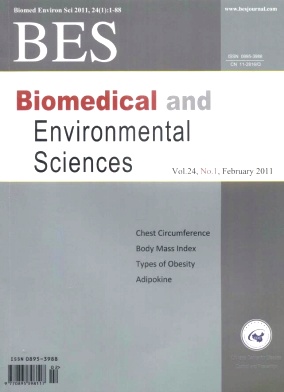Impacts of Types and Degree of Obesity on Non-Alcoholic Fatty Liver Disease and Related Dyslipidemia in Chinese School-Age Children?
doi: 10.3967/0895-3988.2011.01.003
-
Key words:
- Obesity type /
- Degree of obesity /
- Dyslipidemia /
- NAFLD /
- School-age Children
Abstract: Objective To explore the impacts of types and degree of obesity on non-alcoholic fatty liver disease(NAFLD) and related lipids disturbance in Chinese school-age children.Methods A total of 1 452 school-age Children of 7 to 17 years were recruited in Beijing with representative cluster sampling method. Data of anthropometric measurements including weight,height and waist circumference were collected from March to May of 2007. Body mass index (BMI) was calculated. Blood samples were obtained and lipid profiles including triglyceride (TG), total cholesterol (TC), high-density lipoprotein cholesterol (HDL-C) and low-density lipoprotein cholesterol (LDL-C) were measured, while glutamate-pyruvate transaminase (ALT) and glutamic-oxalacetic transaminase (AST)were determined to evaluate liver function. The liver was also scanned by sonography, and abnormal hepatic sonograms were documented. NAFLD was diagnosed according to the criteria recommended by the Fatty Liver and Alcoholic Liver Disease Study Group under the Chinese Liver Disease Association.Analysis of covariance (ANOVA), Chi-square test for trend and binary logistic regression analysis were performed.Results The dyslipidemia and ultrasonographic fatty liver deteriorated with the degree of obesity defined either by BMI or waist circumference. Compared with BMI, waist circumference contributed more to the development of dyslipidemia, fatty liver and NAFLD. The highest levels of TG, TC, LDL-C, and lowest level of HDL-C were seen in the mixed obese group followed by abdominal obese, peripheral obese and non-obese ones. Adjusted for gender and age, the odds ratios (ORs) and their 95%confidence intervals of peripheral obesity, abdominal obesity and mixed obesity were 0, 10.93(0.98-121.96) and 79.16 (10.95-572.44) for predicting NAFLD; 12.61 (1.24-127.78), 19.39 (5.23-71.85),and 93.21 (29.56-293.90) for predicting ultrasonographic fatty liver; 1.78 (0.59-5.44), 3.01 (1.91-4.77),and 4.64 (3.52-6.12) for predicting dyslipidemia, respectively compared with the non-obese control group. The trend of hazards over groups was statistically significant (P<0.01).Conclusion The levels of lipid profile and the prevalence of NAFLD and dyslipidemia increased in parallel with the degree of obesity; As compared with the non-obese control, the mixed obesity had the strongest association with NAFLD and dyslipidemia, followed by abdominal obesity and peripheral obesity in Chinese school-age Children.
| Citation: | MENG LingHui, LUO Na, MI Jie. Impacts of Types and Degree of Obesity on Non-Alcoholic Fatty Liver Disease and Related Dyslipidemia in Chinese School-Age Children?[J]. Biomedical and Environmental Sciences, 2011, 24(1): 22-30. doi: 10.3967/0895-3988.2011.01.003 |







 Quick Links
Quick Links
 DownLoad:
DownLoad: